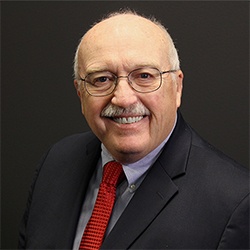For non-auto clients, visit sf.ncmassociates.com.
And the Most Important Service Metric is …

Is your service department looking to noticeably increase its customer-paid Effective Labor Rate (ELR) in the next few years? If so, you are not alone. I have spoken with many dealers who are looking to improve their ELR and have heard a variety of ways to approach this challenge.
The first person many have turned to, and with good reason, is their service manager. If you ask your service manager how they would fix the department’s ELR, they will probably tell you they need to increase either the door rate or the posted rate. While these may seem like logical places to begin, they are unfortunately the wrong answer to the right question. The most effective way I have found to solve this problem is by finding the individual ELR of your service department.
Why your individual ELR matters
Many service managers assume that an increase in the door rate and/or posted rate will automatically increase the ELR, and that’s just not true. If your OEM does not ask for the individual ELR for warranty sales, internal labor sales, or CP labor sales (with a separate ELR for express lube), then you are working off inaccurate assumptions.
On your financial statement, ensure that your service manager runs the Reynolds & Reynolds RAP report, CDK report 3611, and any similar reports available for other DMS, and have them provide a monthly copy to you to review. If all the calculations in your service department are erroneously based on the door rate as opposed to the ELR, metrics such as gross percent of sales and hours per RO are going to be incorrect.
Next, you will want to compare the difference between the door rate and posted rate and the ELR and look for any areas where the difference is $30 per hour or more. These are the areas which demand immediate attention. I advise my dealer-clients that the difference between the door rate and ELR should be no more than $10 per hour and if so, to dig deeper.
Frequently the problem areas in most dealerships include:
- Reviewing the above-indicated reports by service advisor
- Reviewing the ELR for the top 40 maintenance ops
- Reviewing unapplied time (These numbers may be buried in line items like other personnel expenses, advertising expenses, and various other areas.)
Next steps
After you have identified your problem areas, it’s time to get to work and start implementing change. The first hurdle we always see is overcoming the “we’ve always done it this way” mindset. Once everyone is open to change, you will see your ELR rise and your profits grow. If you are concerned about this at your dealership or are somewhat baffled by the solution, the automotive experts at NCM are just a quick call away.
Learn more from our automotive consultants by joining a 20 Group, scheduling dealership consulting, or registering for automotive training in our NCM Institute. You'll be glad you did!
